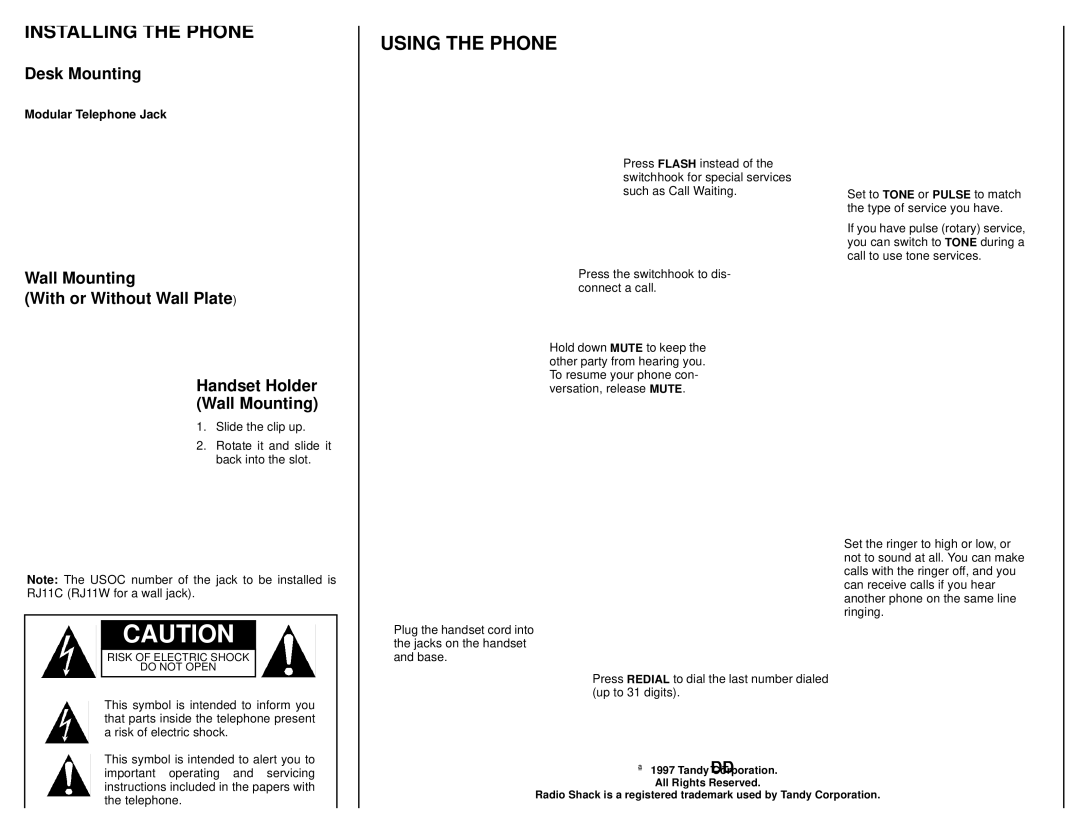ET-177 specifications
The Radio Shack ET-177 is a notable entry in the realm of portable personal computers developed during the 1980s, capturing the imagination of technology enthusiasts and everyday users alike. Launched by the iconic electronics retailer Radio Shack, this model represents a unique blend of innovation and practicality, paving the way for future portable computing solutions.One of the key features of the ET-177 is its compact and lightweight design, which made it highly portable for its time. Weighing in at around 4.5 pounds and featuring a slim profile, users could easily transport it, making it ideal for business professionals and students alike. The device boasted a monochrome LCD display, which provided clear text and graphics, crucial for tasks such as word processing and programming.
At the heart of the ET-177 was its powerful Zilog Z80 processor, which delivered reliable performance for various applications. This 8-bit microprocessor was widely used in home computers, and it allowed the ET-177 to run a diverse array of software. With a base memory of 64 KB, the system could be expanded to accommodate growing user needs, enabling multitasking capabilities that were impressive for the time.
Another standout feature was the built-in BASIC programming language, which facilitated coding directly on the device. This made the ET-177 highly appealing to aspiring programmers and hobbyists looking to create their own software applications. Additionally, the presence of a floppy disk drive allowed users to store and transfer data conveniently, further enhancing productivity.
In terms of connectivity, the ET-177 offered various ports for interfacing with printers, modems, and other peripherals. This flexibility was crucial in an era where personal computing began to gain traction in both homes and businesses. The device also supported a range of communication protocols, enabling users to connect with other systems seamlessly.
Powering the ET-177 was a rechargeable battery, allowing for extended usage away from power outlets. This feature underscored the device's design philosophy focused on mobility and user convenience.
The Radio Shack ET-177 is a remarkable representation of early portable computing, characterized by its blend of functionality, user-friendly features, and innovative technology. As a significant contribution to the evolution of personal computers, it laid the groundwork for subsequent generations of portable devices, leaving an indelible mark on the industry.

